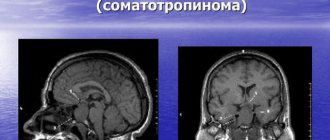Insomnia, the treatment of which with hypnosis is gaining increasing popularity, is a common problem of our time. It would seem that there could be nothing easier than falling asleep after a hard day. You go to bed, but you still can’t sleep. The result is poor health and reduced performance. That’s why it’s so important to pay attention to this problem in a timely manner.
| NAME OF SERVICE | price, rub. |
| Hypnosis (1 session) | 7,000 rubles |
| Ericksonian hypnosis | 8,000 rubles |
Sleep disturbances and insomnia can be caused by a number of reasons. First of all, the modern pace of life has an impact. Other possible reasons:
- nervous disorders and stressful situations;
- negative external influences;
- violations of the regime;
- various types of pain syndromes, etc.
As a result, sleep becomes interrupted with long periods of falling asleep. In order to have a normal rest, you have to resort to sleeping pills. The morning does not promise a vigorous awakening; during the day there is drowsiness, irritability, and lack of strength.
Development of hypnotic practices in Russia
The scientific study of hypnosis began in 1646. Professor and Jesuit Athanasius Kircher noticed the borderline state of animals, became interested and carried out a series of experiments. The Jesuit argued that the phenomenon is pathological in nature, suppresses the will and has a harmful effect on the body. The professor's scientific works made a splash in the medical world. Kircher's practice was repeated by Vasily Yakovlevich Danilevsky in 1878. A professor of physiology at Kharkov University confirmed Kircher’s experience and spoke at a seminar of Russian doctors with a report “On the therapeutic use of hypnotism,” which marked the beginning of the development of hypnotic practices in our country.
The professor also had opponents, in particular, psychiatrist A.A. Tokarsky, who argued that suggestion programs do not cause harm, but strengthen and calm the nervous system. In addition, the doctor argued that the field of application of hypnosis is vast; properly carried out therapeutic practices can save a person from a lot of problems, both psychosomatic and physical disruptions of the nervous system.
Unfortunately, Tokarsky was decimated by tuberculosis, but over the 42 years of his life, the psychiatrist studied, developed and described a number of methods of influence, and also answered questions about hypnotherapy, leaving a huge scientific base for his contemporaries.
Tokarsky’s successor in the study of hypnosis was the famous Russian scientist, psychoneurologist M.V. Bekhterev. Vladimir Mikhailovich made a number of key discoveries in the field of techniques for putting a person into a trance. The scientist noted the importance of verbal suggestions and physical stimuli in immersing the brain in the state desired by the doctor.
Bekhterev conventionally divided hypnosis into three types:
- small;
- average;
- deep.
The scientist’s research is consistent with the scientific works of Auguste Henri Forel, a neurologist and psychiatrist from Switzerland. The doctor classified the conditions of the human nervous system, dividing them into three stages: drowsiness, hypotaxia and somnambulism.
Bekhterev paid special attention to increasing the positive effect of hypnotherapy. Ultimately, the academician concluded that hypnosis is a modified dream. At the end of the 19th century, at the military medical academy, the scientist read a report “Suggestion and its role in public life,” the provisions of which are used by the medical community to this day.
In his report, the academician noted that suggestion is the spiritual influence of one person on another. An example is a husband and wife who, after several years of living together, duplicate each other’s behavior. This phenomenon is facilitated by the hormonal background of the spouses, the state of falling in love and other feelings in which a person becomes receptive. The result of suggestion at the everyday level is the adoption of habits, views, superstitions and beliefs.
In addition to the exchange of habits and judgments, indoctrination is clearly seen in the example of religious sects. Bekhterev proved that the masses of people are more susceptible to suggestion. This explains the success of pseudo-hypnotists, psychics and leaders of various church teachings.
It was these observations that allowed Bekhterev to develop treatment programs. Of course, unstable people can be deceived, but the benefits of such treatment are undeniable. Hypnotherapy continues to develop and brings tangible results in the treatment of that group of people who are susceptible to external influences.
When is hypnosis needed?
The main indication for the use of hypnosis for insomnia is a lack of understanding of the causes of the disorder, the need to understand the patient’s subconscious problems.
Also, the need to use the technique is caused by the lack of effect from adjusting the regimen or using traditional methods of treatment.
Typically, such sessions are useful for people with psycho-emotional disorders and many other disruptions to normal existence without obvious physical abnormalities. Working with a professional therapist is effective in cases of acute shock, chronic stress, and forced disruptions in the patient’s biorhythms. The specialist will help the patient get rid of the consequences of excessive mental overload or physical stress. The therapy also helps reduce a person’s susceptibility to irritants that prevent them from falling asleep or getting enough sleep.
Treatment with a doctor is effective for chronic stress.
Doctors also recommend therapeutic hypnosis to people who are highly suspicious, sensitive, and who react sharply to changed living conditions. For such purposes, the easiest options for influencing the subconscious are prescribed, which do not require putting a person into a state of deep trance.
Causes of insomnia
Sleep disorders are divided into two categories: short-term and long-term.
The first type of insomnia causes severe stress, anxiety, a sudden change in lifestyle, physical activity beyond the norm, and even thinking about an idea or plan. Similar conditions are observed not only in adults, but also in adolescents. For example, before important exams and other exciting events.
Short-term insomnia can bring chaos into a person’s life. After a night of being awake, a day comes filled with an incessant urge to sleep. Each night like this creates a bigger hole in the immune system. The body's strength is depleted, the brain does not rest, which affects performance and concentration.
Such conditions are especially dangerous for those who do not have the opportunity to take a short vacation from work to calm down, sleep and get themselves in order. The consequences of lack of sleep for an aviation pilot or trolleybus driver are not difficult to guess.
Long-term or chronic insomnia is a sleep disorder that lasts for a month or longer. The reasons causing this condition are very diverse:
- severe stress;
- depression;
- hormonal disorders;
- diseases of the nervous system;
- side effects of medications;
- anxiety;
- panic attacks and other mental disorders.
Chronic insomnia is subject to mandatory treatment, since without a full night's sleep, a person's normal life is almost impossible. Often people who want to get rid of insomnia resort to drinking alcohol, thereby changing the disease into an even more terrible addiction.
Insomnia
Insomnia (agrypnia) - widely
A common sleep disorder that affects people of all ages. Characterized by insufficient duration or poor quality of sleep, occurring on a regular basis over a long period of time.
Hypnia, or insomnia, can be observed in a very wide range of diseases, so the symptoms of sleep disorders are varied and depend on the type of disorder. But whatever the sleep disorder, in a short period of time it can lead to a change in a person’s emotional state, attentiveness and performance.
The most common is a psychophysiological sleep disorder. The main factor in the development of psychophysiological sleep disorders is a factor associated with a person’s mental state.
Sleep disorder groups:
- Presomnia disorders. This group includes sleep disorders associated with difficulty falling asleep. In this case, various fears and anxieties come to the person’s mind, and he cannot fall asleep for hours.
- Intrasomnic disorders. This group includes sleep disorders in which the process of falling asleep is more or less satisfactory, but night awakenings occur for various reasons.
- Post-somnia sleep disorders. With this group of sleep disorders, sleep itself and the process of falling asleep are good, however, awakening occurs quite early.
All these types of sleep disturbances lead to increased daytime fatigue, lethargy, fatigue, and decreased activity and performance. Added to these phenomena is a feeling of depression and bad mood. A number of ailments appear that are usually associated with sleep disturbances. These ailments are of a completely diverse nature and can affect the activities of all organs and systems.
Causes of sleep disturbances.
- Stressful situations and psycho-emotional stress. Sleep disturbance resulting from exposure to stressors is a psychophysiological reaction of the body.
- Emotional disorders. Anxiety disorders, mood disorders, panic attacks, depression.
- Physiological disorders caused by a psychogenic factor. This is a lack of air, headaches or other pains, itchy skin, nausea, etc.
How to get healthy sleep back?
The first thing most people do is go to the pharmacy and buy medications, hoping that by taking a pill they will get rid of their insomnia. The dosages of the drugs are gradually increasing, but, alas, they no longer bring relief, and the presence of side effects is also worrying.
Fortunately, there is an effective method to combat this disease.
Our proprietary method “Sound Sleep!” will help you get rid of insomnia and regain your health.
Hypnosis, as a method of treating insomnia, has long been practiced in various countries, including Russia, showing positive results.
Over 20 years of practice, we have developed a unique proprietary method, based exclusively on scientific neurophysiological research of our luminaries - Soviet academicians and professors. Professional influence according to our author’s technique “Sound Sleep!” is one of the most effective services at present, and allows you to identify and eliminate the cause of this disease, restoring healthy sleep.
We will help you avoid serious consequences for your mental and physiological health!
Currently, hypnosis is increasingly gaining popularity among specialists and ordinary people. People turn to hypnologists for a variety of reasons. The most common situations for the use of hypnosis are various neuroses, phobias, fears, depression, OCD, IBS, VSD, digestive, sexual disorders, correction of human behavioral reactions, low self-esteem, complexes, bad habits. Moreover, in these cases, hypnotherapy remains the only effective method, since it is aimed at ridding the patient of the causes of his disease, while all other methods, including pharmaceutical ones, claim only to temporarily relieve symptoms.
Meanwhile, the patient’s psychogenic failure does not stand still, but generalizes and acquires a more pronounced heterogeneous character, involving increasingly large areas of the functional system in pathogenesis.
The successful use of hypnosis in the treatment of such a wide range of diseases is due to the fact that the point of application of the therapeutic word in hypnosis is the cerebral hemispheres of the human brain, which control all organs and systems of the body. The word in hypnosis turns out to be an extremely powerful healing factor, producing a direct and immediate effect on the nature and dynamics of cortical processes. This opens a direct path to eliminating pathological processes and mobilizing the necessary internal resources of the human body.
Therefore, hypnotherapy is the only method of psychological assistance to a person that allows one to eliminate the cause of the disease, and not its symptom, having a direct and immediate impact on the nature and dynamics of cortical processes, mobilizing the necessary internal resources of the human body.
Over many years of our medical practice, patients came to us with the most incredible situations of depression, fears, phobias, which later stopped bothering them, completely normalizing their sleep. Those who suffer from ahypnia should not be disappointed and lose hope for healing, because with our help, you will rid yourself of this disease forever.
Are there possible side effects from hypnosis?
According to experts, to date no such facts have been identified. Research at different times was carried out by such prominent and authoritative scientists as: V. M. Bekhterev, I. P. Pavlov, S. S. Libikh (1974), A. I. Zakharov (1982), A. A. Tokarsky (1989) , M. S. Lebedinsky, A. T. Pshonik (1952), L. L. Vasilyev, I. P. Bryazgunov (1970) L. Chertok (1972), V. I. Sukhorukova (1977), P. K. Anokhin, N. E. Vvedensky (1911-1913), N. I. Krasnogorsky, V. M. Shklovsky (1975, 1994), V. N. Myasishchev, Yu. A. Povorinsky (1950), S. N. Davidenkov , K. M. Varshavsky (1973), S. S. Kor-sakov, K. M. Bykov, A. M. Svyadoshch (1982), V. Ya. Danilevsky, B. N. Birman (1922,1925, 1946 ), L. B. Gakkel (1955), D. Ya. Vengerovsky (1955), I. Z. Velvovsky (1984), A. L. Groysman, K. I. Platonov (1957), S. L. Rubinstein, V. E. Rozhnov, A. A. Ukhtomsky, I. M. Sechenov, A. M. Svyadosch, A. P. Slobodyanik, E. S. Katkov, M. P. Kutanii, V. V. Kuzmin, P. P. Podyapolsky, E. N. Dovbnya, F. E. Rybakov, V. N. Khoroshko, A. I. Yarotsky, A. F. Lazursky, Yu. V. Kannabikh, V. M. Narbut, F. D. Netkachev, V. A. Gilyarovsky, M. V. Strelchuk, G. V. Morozov, V. M. Banshchikov, N.V. Ivanov, N.K. Lipgart, A.G. Ivanov-Smolensky, etc. Scientists have proven that the human psyche self-regulates during a therapeutic trance, its internal reserves are mobilized, the body’s defenses are activated (compensatory ), the body’s homeostasis returns to normal, and therefore there is no danger to the patient’s mental and physiological health.
Positive aspects of hypnotic treatment of phobias, fears, panic attacks:
- Complete absence of drug effects on the human body.
- Healthy. Normalizes the homeostasis of the body, strengthens the central nervous system, etc.
- No side effect.
- Complete 100% relief from this disease.
- Elimination of the causes of the disease.
- Cheaper.
A treatment hypnosis session in itself is healing for a person. Hypnosis improves a person’s overall well-being, ensures the coordinated functioning of all organs and systems of the body (homeostasis), which allows the patient to feel a new surge of vitality. It has a positive effect on the functioning of many organs and systems: cardiovascular, respiratory, endocrine, digestive, central nervous system, helps with insomnia, relieves irritability, reduces anxiety, etc.
Independent attempts to get rid of hahypnia leads to further depression of the central nervous system, with increased irritability and anxiety. And only hypnotherapy helps overcome the negative consequences for your nervous system.
Our proprietary method “Sleep soundly!” will allow you to return to normal life and enjoy it.
Be healthy and take care of yourself!
Hypnosis session technology
The positive effect of hypnotherapy on the nervous system is a scientifically proven fact. But not everyone is deeply affected, as mentioned above. This is due to the ability of a particular person’s brain to enter a borderline state.
According to Bekhterev's classification, suggestion techniques are divided into three types. Let's consider in what situation each of them is applicable.
Lesser hypnosis
This phenomenon was studied in detail by Professor Pavlov and was called “partial inhibition of nerve cells.” Foci of cell inhibition occur in the cerebral cortex, causing a person to fall into the reverie described above. People fall into this state from monotonous sounds and other monotonous stimuli.
Medium hypnosis
The transition state occurs when foci of inhibition spread. The person falls into a half-sleep, which, with the skill of the hypnotist, is very difficult to “reset” and come to his senses. There is an opinion that it is middle hypnosis that is used by gypsies and scammers. In therapy, this type is also used for various diagnoses, especially psychosomatics. There are cases where suggestion has restored vision lost due to severe stress.
Deep hypnosis
The next state after the average. The lesions spread throughout the cerebral cortex, merging into a single whole. Nerve cells are so inhibited that a person loses sensitivity and does not react to a needle prick or cut. Only a fifth of humanity is subject to deep trance. The practice is used in medicine when it is impossible to anesthetize the patient.
Types of meditation and hypnosis
Spring depression in women and men - how to deal with depression
Hypnosis and meditation are different practices. Meditation hypnosis for sleep is a combination of two elements:
- relaxation,
- “loading”, instilling the necessary qualities.
At the moment of meditation, the body rests, this is its goal. For hypnosis, the priority is to work with negative attitudes, a person’s anxiety, and enter an altered state. All this can be solved immediately in one practice.
Types of hypnosis:
- Classic, Ericksonian.
- Gypsy.
- Colloquial.
- Instant by Faria.
- American.
- Regressive.
- Suggestion during sleep.
As a rule, classical hypnosis or elements of suggestion are used in hypnosis meditation for sleep.
Meditations are divided into:
- Buddhist: Zen meditation, mindfulness, Vipassana, metta.
- Vedic: mantra, transcendental.
- Yogic: chakra, kundalini, kriya, tantra, pranayama.
- I-meditation.
- Chinese: Taoist, qigong.
- Christian: contemplative prayer, “sitting with God,” Jesus’ rosary prayer.
- Modern guided meditations: healing, for insomnia, for weight loss and others.
Modern meditation is the most popular nowadays. Most often they contain a voice that puts the listener into the desired state. Now you can find many such practices online:
- Angelina Mozolevskaya “Meditation before bed” 37 minutes,
- Studio “Management of Miracles” “Meditation before bed” 45 minutes,
- “Journey to the Planet of Happiness” 43 minutes.
In yoga, yoga nidra is of particular importance. This is a special practice that takes a long time. It promotes effective processing of blocks in the body, rapid recovery and relaxation.
Full body relaxation meditation – yoga nidra
Note! When turning to sources on the Internet, you need to be sure that they will not cause harm. Therefore, it is especially important to review the representative's license, education, and work experience.
How hypnosis treats insomnia
There are many techniques for entering a hypnotic trance. But they are all based on the familiar effect of inhibition of the nervous system. The hypnotist puts the patient into semi-sleep using the sounds of a metronome, relaxing musical compositions, and monotonous repetition of words. When the patient is brought into the desired state, the specialist begins to “rewrite” the data in the subconscious.
A good hypnotist can be compared to a programmer. The Doctor “creates a code” in the same way, erasing unnecessary information and introducing new information. Only instead of a mechanical machine there is a flexible human brain. Insomnia is only a consequence, and for healing the cause must be established.
Getting rid of insomnia takes place in several sessions. The first is to find out the cause of this condition when talking with the patient. After establishing the reasons, the person is put into semi-sleep and the reasons are again found out, comparing them with the results of the conversation. In the treatment of any disease, it is important to identify triggers that serve as a trigger.
Insomnia caused by stress, fatigue, anxiety and worry is the easiest to treat. It is much more difficult to cure the consequences of depression, mental disorder, and diseases of the nervous system.
Having established the reasons, the hypnotherapist talks with the patient again, summing up the results of the first meeting. If the cause of sleep disturbance is a disease, the doctor suggests starting treatment. Perhaps the sessions will contribute to a speedy recovery.
In case of overwork or stress, the hypnotherapist introduces the patient to the scheme and chosen treatment technique, and then conducts it in the following sessions.
Hypnotherapy is a rather pleasant procedure, after which the exhausted brain will in any case receive relaxation and new strength to fight the disease.
Kinds
Some therapists have specific types of hypnosis, while others practice several of them.
Each approach has its own characteristics, pros and cons. Regardless of the specifics, any of the methods can be effective in the fight against insomnia. The main thing is that the implementation is carried out by a professional who is familiar with all the intricacies of the technique and the features of a particular case. Effective behavior correction methods using hypnosis that can be used to treat insomnia:
- The classical approach is the most common direction. The patient is put into a trance state, after which direct instructions are given;
- according to Erickson - suggestion is carried out by establishing close contact with the client through facial expressions and heartfelt speech;
- according to Valjak - a technique based on the Ericksonian approach, which involves a course of hypnotherapy and allows a person to understand his inner world and understand problems;
- Rakitsky’s technique is another modern author’s approach, which consists of listening to audio materials. The hypnologist covers several areas, including the fight against insomnia. This therapy is suitable for self-medication, but its effectiveness still seems doubtful to a number of professionals;
- regressive hypnosis - during a session, the subject is forced to remember the past through suggestion. Typically, this technique is used to find out the cause of psycho-emotional disorders or mental problems;
- self-hypnosis - treatment occurs due to the fact that a person instills the necessary attitudes in himself.
Rakitsky’s method consists of listening to audio materials.
The effectiveness of hypnosis treatment depends not so much on the specifics of the chosen technique, but on the professionalism of the therapist. An important role is played by the client’s mood and the degree of his suggestibility. Using this approach, you cannot abandon other methods of combating insomnia; you must always observe sleep hygiene.
Contraindications
The practice of suggestion does not bring relief to everyone.
In some cases, sessions are contraindicated:
- acute phase of respiratory diseases;
- pregnancy;
- exacerbation of chronic diseases of organs and systems;
- physical pain and illness
Sometimes complications arise as a result of an incorrectly performed session:
- hypnophobia. The patient experiences panic fear of going into a trance. The problem appears only from the actions of an unprofessional hypnotist. A side effect of this therapy, besides fear, is loss of sleep.
- Lost contact. Occurs as a result of the hypnotist's distraction from the patient. The person stops responding to the doctor’s words. There will definitely be no benefit from such a procedure.
Qualification of a hypnotherapist is half the success in treating insomnia. Therefore, it is necessary to study the reputation of the specialist and the clinic in which he works, and read reviews. In the most innocent case, a Person will simply lose the money given to an amateur, but such sessions can also be dangerous. Whether it is worth saving on your health is a personal decision for everyone.
Meditation Mechanism
Black color in psychology - what it means for women and men who like
The meditation process can take place either lying down or in a position that is comfortable for the person. It is important that this is a comfortable position and that nothing constrains you. Then the focus of thoughts will be only on the practice itself, and not on distractions.
If after completing the practice there is a state of complete relaxation and tranquility, the meditation was successful.
In the process of meditation, harmony with oneself is achieved
Important! Don't worry if you manage to fall asleep until the morning. This indicates a very tired body. It is necessary to continue the practice of immersion the next day. After some time, the body will be filled with energy in abundance, and you will be able to consciously direct your consciousness during moments of practice.
Stages of the meditation process:
- Concentrate on inhalation and exhalation. This is how unnecessary, unnecessary, everyday thoughts are eliminated.
- Then comes the visualization stage. At this moment, you need to see exactly the right picture inside yourself. Usually this is a beautiful landscape, the seashore, waves - everything that gives pleasure. It is very good if kinesthetics are added to visualization - the feeling in the body of emotions seen.
- If the previous stage is difficult, you can add reciting phrases to enhance the relaxation effect: “My body is completely relaxed,” “My legs and arms are getting heavy,” “I feel warm.”
- The next point is observation. You can just immerse yourself in the picture and do nothing. A more advanced option: “get out” of the body and look at yourself from the outside, or imagine yourself as something inanimate (for example, sand on the beach) and see what is happening around. With this technique you can very quickly develop your consciousness.
- The final stage is the “return” to your body and further sleep. It’s enough just to feel your body, the room around you, and remember what it looks like. You don’t have to open your eyes, but continue to fall asleep.
Results
If you decide to contact a specialized medical center for the treatment of sleep disorders with hypnosis, we advise you to pay attention to the following clinics:
- Moscow Institute of Hypnosis - Moscow
- Hippocrates Medical Center - Moscow
- Clinic "Doctor Sun" - St. Petersburg
Therapy helps with a range of problems, from addictions to insomnia. In addition to external influence, self-hypnosis is possible, but the path to the desired effect is long and difficult. For example, auto-training can be classified as such a practice. The technique only works when a person manages to immerse himself in such a borderline state. This is the part of self-guided hypnotherapy that is most challenging.
Treatment of sleep disorders
If any sleep disorder is diagnosed, treatment will help normalize the situation. You should not experiment on your own with sleeping pills, which have many side effects. It is better to contact a qualified specialist who will restore the normal functioning of the nervous system. If insomnia is caused by some kind of somatic ailment, the underlying disease needs to be treated. This often solves the problem completely. In case of psychosomatic disorder, psychotherapeutic methods and hypnosis come to the rescue.
Hypnosis methods
Light therapy for insomnia is aimed at adjusting the physiological state of rest. It forces the body to remember how it fell asleep before, in a healthy state.
Self-hypnosis
Treatment of insomnia with hypnosis can be done on your own. The technique works on the following principle: the information that a person receives independently is completely perceived by the conscious and subconscious. This happens due to the sleeper's trust in himself.
When it is time to fall asleep, clear suggestions are made in a quiet voice. Do not use negative words or phrases with a negative connotation. It is mandatory to use pronouns in the 1st person, singular. A sentence is composed as an action in the present tense. You need to concentrate, be patient, and turn on your rich imagination.
Use sentences:
Prerequisite: words are pronounced while imagining. This is stage 2 of falling asleep. Properly performed self-hypnosis does not allow you to return to a state of wakefulness.
Professional hypnosis
If self-hypnosis for insomnia fails, contact a hypnotherapist. The most common way to influence consciousness is to set:
It is written down by a specialist on a piece of paper. When the patient is in the artificial trance stage, he gives the client a text with instructions. He says that every evening the patient will take out a note and recite the text written on it. Next, the doctor indicates that the patient should fixate these words with his gaze while hearing his own voice. The speech will put the client into a trance. His rest will be deep, restorative, and after waking up he will feel cheerful, strong, and energetic.
Also, for insomnia, the specialist allows you to listen to the finished text, turning on the recording of the suggestion. This type of treatment was invented by psychotherapist Milton Erickson.
This is one of the effective and safe ways without deep trance. It reduces muscle spasms. The brain relaxes and reduces nervous activity. The patient falls asleep naturally, gradually drifting off to sleep. He forgets about the problems that prevented him from falling asleep, without affecting his consciousness.
Audiotherapy is carried out using the verbal method. The action is achieved through the rhythm and low tone of suggestion. Special words are also used. All together creates a complete setting for a relaxing holiday.
Noise sounds relieve insomnia, putting you into a light sleep. Include:
- the sound of a train moving;
- the sound of sea waves;
- Birdsong;
- the murmur of rivers and streams.
Meditation is also used. The power of imagination is used to change the consciousness of the sleeper. They believe that drawing the desired picture in the mind helps to translate what you want into real life.
An imaging session can stimulate the visual part of the brain. First, the hypnotist puts the client into a trance, then asks him to imagine in detail the patient’s favorite vacation spot. This could be a sandy beach, the bank of a mountain river, etc. Next, the doctor convinces the client that he is in this zone and invites him to look at himself from the outside.









